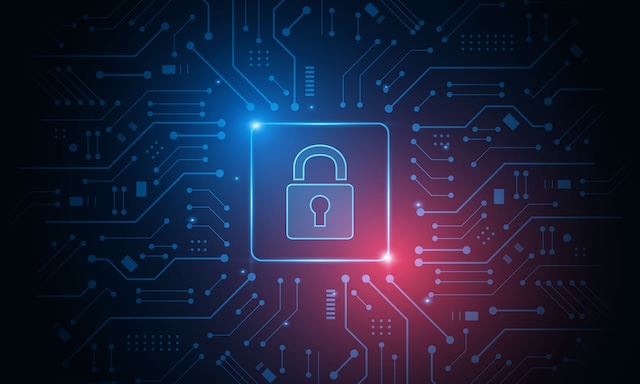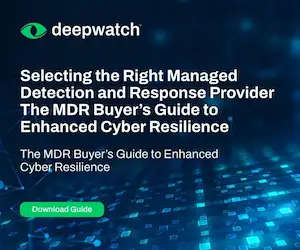
Threat containment is the set of coordinated actions and technologies used to isolate, limit, or neutralize malicious activity within an organization’s IT environment before it can spread, escalate privileges, exfiltrate data, or impact business operations. It plays a central role in incident response and is crucial to minimizing the impact of cyberattacks in enterprise environments.
The Role of Threat Containment in Modern Cybersecurity Strategy
In modern cybersecurity strategy, threat containment serves as a critical response mechanism that limits attacker movement, mitigates impact, and preserves system integrity during active incidents. It is an operational priority in enterprise-scale environments where speed and precision are vital.
- Reducing lateral movement and limiting attacker access: Containment mechanisms such as dynamic network segmentation, endpoint isolation, and user account lockdowns prevent adversaries from traversing environments once initial access is gained. By curtailing east-west traffic and applying privilege containment at the identity layer, organizations can disrupt attack chains before they reach high-value assets.
- Preserving operational continuity under threat conditions: Effective containment minimizes downtime and data exposure without halting business-critical services. Selective isolation—such as quarantining affected virtual machines (VMs) or restricting outbound traffic on suspicious endpoints—maintains operational performance while stopping the propagation of threats.
- Enabling real-time, orchestrated incident response: SOAR platforms and EDR/XDR tools integrate containment actions into automated playbooks, facilitating swift, coordinated actions across multiple systems. These orchestration tools reduce reliance on manual intervention, enabling security teams to respond within seconds of detection, thereby significantly lowering the mean time to respond (MTTR).
- Enhancing forensic and post-incident analysis: Isolated systems preserve the attacker’s footprint, allowing for detailed forensic analysis without risk of evidence tampering or further compromise. Containment provides a stable environment for assessing TTPs, identifying scope compromise, and gathering indicators for detection tuning and intelligence feedback loops.
Threat containment is not merely a technical countermeasure but a strategic safeguard that buys time, preserves integrity, and enables informed response. As enterprise environments grow more distributed and adversaries adopt stealthier methods, integrating containment into the core of incident response and architecture design is imperative for sustained resilience and effective cyber defense.
Core Techniques and Tools for Threat Containment
Threat containment relies on precise, repeatable techniques that neutralize threats without disrupting broader business operations. These methods leverage automation, visibility, and control across endpoints, networks, and identities.
- Network segmentation and isolation: Micro-segmentation, VLAN-based isolation, and software-defined networking (SDN) policies enable containment at the network level. These methods dynamically restrict communication between compromised assets and other parts of the environment, halting lateral movement and command-and-control traffic. Cloud-native environments extend this with security groups and zero-trust overlays that isolate affected workloads in real-time.
- Endpoint quarantine and response: EDR and XDR platforms enable the isolation of compromised endpoints from the network, either automatically or through manual intervention by analysts. Quarantining disables all non-essential communication channels, often allowing read-only access for investigation. This containment preserves the system for forensics while minimizing risk to adjacent infrastructure.
- User identity controls and privilege containment: Threat containment at the identity layer involves revoking tokens, disabling accounts, enforcing password resets, or modifying conditional access policies to prevent unauthorized access. These actions are essential in credential theft, privilege escalation, or session hijacking scenarios. Tight integration with identity providers (IdPs) ensures rapid execution of these actions across distributed systems.
- Firewall rule enforcement and traffic filtering: Firewalls and intrusion prevention systems (IPS) are used to block malicious IP addresses, domains, or indicators of compromise (IOCs) at the perimeter and internal segmentation points. Dynamic rule updates—driven by threat intelligence feeds or detection engines—can immediately sever attacker communication or halt exploit delivery mechanisms.
- SOAR-driven containment automation: Security Orchestration, Automation, and Response (SOAR) platforms script and automate threat containment workflows. They unify tools across network, cloud, endpoint, and identity layers, allowing for synchronized response playbooks that reduce containment time from hours to seconds.
Threat containment tools and techniques are most effective when integrated into a unified response framework. Enterprises that align detection, orchestration, and policy enforcement around these mechanisms gain the speed and precision needed to suppress attacks before they escalate.
Threat Containment’s Operational Considerations and Challenges
Implementing threat containment at scale involves navigating complex trade-offs between speed, accuracy, coordination, and impact. This section outlines the key operational factors that influence the effectiveness of containment in enterprise environments.
- Balancing speed with accuracy: Immediate containment actions carry the risk of false positives, which can disrupt legitimate business functions or isolate mission-critical assets. SOC teams must assess detection confidence and leverage contextual threat intelligence before initiating containment. Policy thresholds and enriched telemetry should gate automated containment to prevent operational missteps.
- Cross-team coordination and workflow alignment: Containment involves stakeholders beyond the SOC, including IT, cloud operations, legal, and compliance teams. Clear escalation paths, predefined response roles, and standardized communication protocols are crucial for coordinating responses and preventing conflicts, particularly during high-severity incidents. Playbooks must account for internal service-level agreements (SLAs), third-party dependencies, and regulatory obligations.
- Legacy infrastructure limitations: Older systems often lack the APIs or programmability required for real-time containment actions. Manual intervention or compensating controls may be necessary, such as static network access control lists (ACLs) or host-based access controls. Enterprises must prioritize modernization or deploy overlay solutions that provide containment capabilities in hybrid environments.
- Minimizing operational disruption during containment: Overly aggressive isolation can result in unintended outages or degraded service performance. Tiered containment—such as throttling network access, enabling read-only modes, or limiting protocol usage—allows teams to contain threats without entirely disabling systems. These graduated responses reduce risk while preserving continuity.
Threat containment operations must be tightly integrated with detection, response, and recovery processes to function effectively under pressure. Designing playbooks that anticipate friction points, support partial automation, and account for business impact ensures that containment actions are both tactically sound and strategically aligned with organizational resilience objectives.
Strategic Benefits of Effective Threat Containment
Effective threat containment delivers long-term strategic value by enhancing organizational agility, improving incident metrics, and supporting compliance and intelligence functions. This section examines how containment contributes to broader security outcomes beyond the immediate resolution of incidents.
- Accelerating mean time to respond (MTTR): Containment shrinks the response window by enabling decisive action at the point of detection. Automated quarantine, identity revocation, and network segmentation reduce analyst workload and compress the time between alert and resolution. This improves MTTR—one of the most critical KPIs for SOC performance—while ensuring adversaries are neutralized before they can cause a more profound impact.
- Enhancing incident resilience and business continuity: Containment allows systems to degrade gracefully rather than fail catastrophically. Isolating affected assets while maintaining partial functionality enables enterprises to sustain critical operations during an incident. This resilience is especially valuable in regulated sectors, where service availability and data integrity are closely tied to legal obligations and customer trust.
- Strengthening compliance and reducing breach impact: Containment limits the scope of data exposure and often reduces regulatory reporting thresholds. By demonstrating active defense controls and structured incident response, organizations can show compliance with data protection laws such as GDPR, HIPAA, and CCPA. In some cases, swift containment can be the difference between a security incident and a legally defined breach.
- Feeding intelligence and detection refinement: Every containment event yields valuable telemetry that informs detection logic and threat modeling. Indicators, behaviors, and root causes extracted from contained incidents inform threat intelligence programs. They can be used to fine-tune SIEM rules, enhance the precision of machine learning (ML) models, and improve purple teaming exercises.
Strategic containment transforms incident response from a reactive cleanup to a proactive risk management approach. By embedding containment into the enterprise’s security architecture and operational playbooks, organizations gain control over the progression of attacks, protect core assets, and enhance their overall cybersecurity maturity and posture.
Emerging Trends in Threat Containment
As adversaries adopt more adaptive tactics and infrastructures grow more dynamic, threat containment strategies are evolving to match. This section highlights the most significant emerging trends reshaping containment in modern cybersecurity architectures.
- Containment-as-code and DevSecOps integration: Security teams are embedding containment logic directly into CI/CD pipelines and infrastructure-as-code templates. This approach enables security controls to scale in tandem with the deployment of applications and infrastructure. Containment-as-code enables automated rollback, segmentation, or shutdown of compromised components at the infrastructure layer, supporting rapid remediation without manual SOC involvement.
- Zero trust enforcement at the threat vector: Zero Trust Architecture (ZTA) is shifting containment from reactive isolation to continuous, proactive access control. Policy engines apply real-time authentication and micro-segmentation to limit lateral movement and revoke access instantly upon anomaly detection. This model ensures containment actions are enforced at the user, device, and workload level without waiting for centralized orchestration.
- AI-augmented decision-making and response: Machine learning models are increasingly used to determine the scope and severity of incidents, prioritizing containment based on contextual risk. These systems can correlate telemetry from multiple sources—endpoint, identity, network—and recommend or initiate response playbooks. AI-driven containment helps reduce analyst fatigue, improves accuracy, and enables faster responses to polymorphic or unknown threats.
- Containerized and serverless runtime containment: Cloud-native environments introduce ephemeral workloads that require containment at runtime. Tools capable of pausing or killing containerized processes or intercepting malicious syscalls without impacting adjacent services are becoming essential. Runtime protection for serverless functions adds similar capabilities for function invocation control, limiting abuse in distributed event-driven applications.
Modern threat containment is becoming more integrated, predictive, and embedded across the technology stack. As enterprise infrastructure continues to evolve toward cloud-native, identity-centric, and automated paradigms, these emerging trends will shape how security teams prevent threats from escalating in real-time and at scale.
Conclusion
Threat containment is not just a technical control—it is a strategic capability that enables organizations to respond decisively to threats, preserve business operations, and limit security breaches before they escalate. For cybersecurity leaders and operational teams in large enterprises, developing a robust containment strategy is crucial for defending against contemporary threats and achieving operational resilience. As attackers grow more agile and infrastructures become more complex, proactive and automated containment is becoming a cornerstone of effective cybersecurity.
Deepwatch® is the pioneer of AI- and human-driven cyber resilience. By combining AI, security data, intelligence, and human expertise, the Deepwatch Platform helps organizations reduce risk through early and precise threat detection and remediation. Ready to Become Cyber Resilient? Meet with our managed security experts to discuss your use cases, technology, and pain points and learn how Deepwatch can help.
Learn More About Threat Containment
Interested in learning more about threat containment? Check out the following related content:
- Deepwatch Platform – Threat Management Capabilities: This article outlines core threat management functions, including Active Response, across identity, endpoint, network, and cloud environments. It highlights how Deepwatch integrates dynamic risk scoring and active containment.
- Deepwatch ATI (Adversary Tactics & Intelligence): Explore how Deepwatch’s ATI team operationalizes adversary intelligence to support containment strategies, including forensic collection, containment design, and incident response orchestration.
- Deepwatch MXDR Automated Response Service: This article describes Deepwatch’s MXDR capabilities, which enable machine-speed automated containment across endpoints, networks, cloud, email, and identity systems.
- Deepwatch Advances SecOps Platform to Detect & Contain Identity Threats: This article outlines platform enhancements such as MXDR for Identity and Endpoint, which automate containment actions across identity and endpoint layers.
- Hyperautomation in Incident Response: This blog post explores how Deepwatch leverages hyperautomation to orchestrate containment, eradication, and recovery steps across multiple platforms, emphasizing the importance of coordination and trust in automation.
